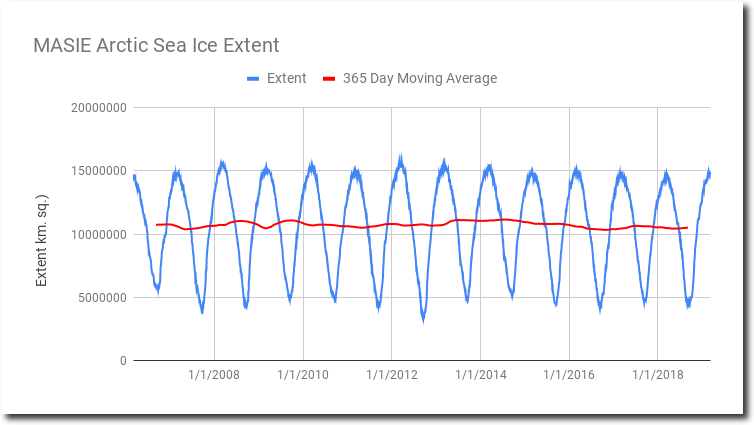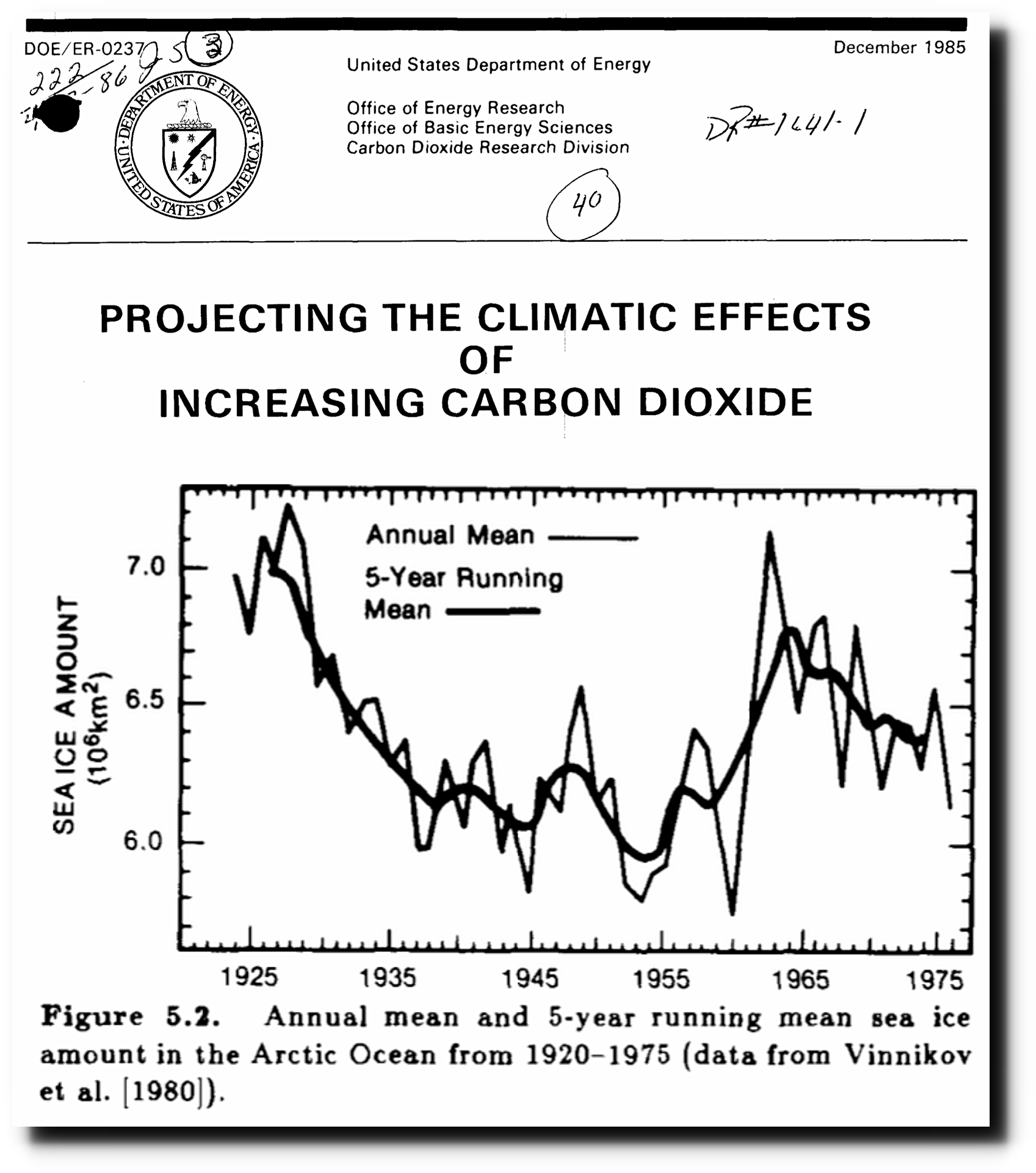- 10 Jan 2020 09:20
#15058761
The graph he shared is ice extent.
Extent is calculated using a grid of squares, each square with 15% or more sea ice is included. We could be much more accurate today but then we wouldn't be able to compare like with like historically.
Area is calculated by marking the edge of the ice pack and including the whole area it encloses.
Volume has always been the tougher to calculate. The average ice thickness has become easier as tech has improved but it's also highlighted how much thicker multi year ice has been lost.
The truth is it doesn't matter which you use or which method you use to calculate trend. The result is the same, a trend towards zero. My preference for this was volume simply because we are referring to a three dimensional object and the ice thickness is important when determining how close we are to reaching a BOE.
It's also worth remembering we are talking about reaching a single day of ice below 1m km2 extent and not a magical switch to no ice the whole summer.
Pants-of-dog wrote:@Truth To PowerSorry to be pedantic
Why did you try to refute a claim about sea ice volume with a graph about sea ice area?
Volume and area are two different things.
The graph he shared is ice extent.
Extent is calculated using a grid of squares, each square with 15% or more sea ice is included. We could be much more accurate today but then we wouldn't be able to compare like with like historically.
Area is calculated by marking the edge of the ice pack and including the whole area it encloses.
Volume has always been the tougher to calculate. The average ice thickness has become easier as tech has improved but it's also highlighted how much thicker multi year ice has been lost.
The truth is it doesn't matter which you use or which method you use to calculate trend. The result is the same, a trend towards zero. My preference for this was volume simply because we are referring to a three dimensional object and the ice thickness is important when determining how close we are to reaching a BOE.
It's also worth remembering we are talking about reaching a single day of ice below 1m km2 extent and not a magical switch to no ice the whole summer.







 ) measured the spread of vegetation cover across four height brackets from 4,150 to 6,000 metres above sea level. The study, published in Global Change Biology (Once again, known Commies, never trumpers and all around fake news stooges with a few Iranians tossed in …….. ENEMIES! ENEMIES ALL!
) measured the spread of vegetation cover across four height brackets from 4,150 to 6,000 metres above sea level. The study, published in Global Change Biology (Once again, known Commies, never trumpers and all around fake news stooges with a few Iranians tossed in …….. ENEMIES! ENEMIES ALL! 





 Yes, well, anti-CO2 hysteria propagandists have been there before, haven't they?
Yes, well, anti-CO2 hysteria propagandists have been there before, haven't they? - By Tainari88
- By Tainari88 - By wat0n
- By wat0n